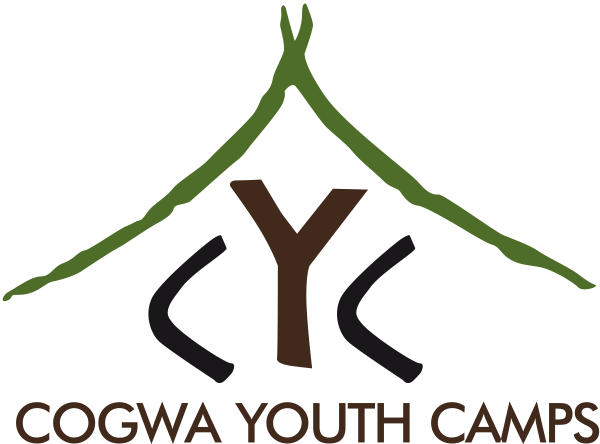Member News
April 2025 Member Letter
April 3, 2025
Dear Brethren,
I clearly remember the first time I had to explain the holy days to someone outside the Church. I was 12 years old, and it was my first day back in school after the Feast of Tabernacles. Early on in the school year, my sixth grade teacher, who was also a lay minister in the Church of Christ, had singled me out because of my beliefs. It seemed as though it was his mission to convert me—or at the very least, embarrass me because of those beliefs. And when we returned from the Feast that year, he was especially agitated that I felt it necessary to observe these “Jewish” days. I don’t recall everything I said, but I do remember that, even at the age of 12, I knew exactly what the holy days symbolized. I explained the plan of salvation in simple terms in front of the entire class. I wasn’t embarrassed about what I believed, but it was embarrassing at age 12 to explain it to my classmates and my lay minister teacher.
In retrospect, I believe that the understanding of the holy days as steps in the plan of salvation is one of the greatest truths ever given to the Church. I have studied the modern history of the Church, and there is a distinct difference around 1945, when Herbert Armstrong came to understand the need to go to the place God had chosen to observe the Feast of Tabernacles, rather than observing it in the small church building in Eugene, Oregon. This understanding, coupled with the announcement of the move to Southern California, sent shock waves through the Eugene congregation of the Radio Church of God. Festival attendance dropped from 60 in 1944 to 40 in 1945. A full third of the Church did not attend the Feast that year. It took several years before those numbers recovered.
During those years and right up until the last Feast he attended prior to his death, Mr. Armstrong took at least one service each year during the Feast of Tabernacles to explain the symbolism of the seven annual festivals, beginning with Passover and concluding with the Last Great Day. It is a story that needs to be repeated each year to ensure that we never lose sight of the meaning of these very special days.
By the time you receive this letter, we will be within a few days of the Passover, the first festival of the year. This year the Passover will be observed on Friday evening, April 11, which is the beginning of the 14th day of Abib on the Hebrew calendar. The Passover is not a “holy day” (although this year it does fall on a weekly Sabbath day), but it is an evening ceremony that has unique and significant symbolism attached to it. We will gather in our congregations after sunset on that Friday. The ceremony is simple, consisting of three elements—foot washing, unleavened bread and wine. We begin the service, as Christ did, without a prayer, but we do give thanks, as Christ did, over the bread and over the wine. We end the ceremony without a prayer, but with a hymn. We quietly depart from the service having “proclaim[ed] the Lord’s death” (1 Corinthians 11:26) one more time. We acknowledge that it is our desire to continue this ceremony each year until Christ returns. We will be one year closer to Christ’s return after that Friday evening service.
There are seven days of Unleavened Bread, which constitutes the second festival of the year. Passover is not one of the days of Unleavened Bread, even though we do use unleavened bread during the ceremony. Leviticus 23 shows us that these are two distinct festivals. Passover is in the evening at the beginning of the 14th, and the Days of Unleavened Bread start at sunset on the evening at the beginning of the 15th, 24 hours after we observed the Passover. We find these instructions:
“These are the feasts of the LORD, holy convocations which you shall proclaim at their appointed times. On the fourteenth day of the first month at twilight is the LORD’s Passover. And on the fifteenth day of the same month is the Feast of Unleavened Bread to the LORD; seven days you must eat unleavened bread” (Leviticus 23:4-6).
The seven days of Unleavened Bread conclude at sunset at the end of the 21st day of the first month.
“So you shall observe the Feast of Unleavened Bread, for on this same day I will have brought your armies out of the land of Egypt. Therefore, you shall observe this day throughout your generations as an everlasting ordinance. In the first month, on the fourteenth day of the month at evening [at the end of the 14th and the beginning of the 15th], you shall eat unleavened bread, until the twenty-first day of the month at evening [at the end of the day]” (Exodus 12:17-18).
It is very clear that these are two separate festivals—Passover is on the 14th in the evening at the beginning of the day, and the first day of Unleavened Bread begins at sunset at the end of the 14th and the beginning of the 15th. The Passover pictures our acceptance of the sacrifice of Jesus Christ as our Savior. This event is the first step in God’s plan for mankind. We read that Jesus Christ is the way, the truth and the life. We are told that He is “the door of the sheep” (John 10:7).
“Jesus said to him, ‘I am the way, the truth, and the life. No one comes to the Father except through Me’” (John 14:6).
The plan of salvation for mankind begins with the death of Jesus Christ. It then continues with removing sin and replacing it with “the unleavened bread of sincerity and truth” (1 Corinthians 5:8). This is the meaning of the Feast of Unleavened Bread. There are seven days of Unleavened Bread. The first day and the last day are holy days, sabbaths of rest.
Fifty days from the day of the wave sheaf, we observe the Feast of Pentecost, which is the last of the three spring festivals and symbolizes the sealing of the firstfruits. We now await the fulfillment of the final four festivals. We await the coming of Christ and the first resurrection, the removal of Satan, the large fall harvest and the millennial reign of Jesus Christ, and the day of final judgment—the Feast of Trumpets, Day of Atonement, Feast of Tabernacles and Last Great Day.
As a 12-year-old in my sixth-grade class, prodded by my Church of Christ teacher, I briefly explained these days and why they were Christian and not Jewish. We will gather in a few days on the night of Passover, followed by the Night to Be Much Observed and the Days of Unleavened Bread. I hope these days are just as crystal clear for you. What a wonderful truth and understanding God has given to us. It brings joy and hope to God’s people around the world. Please have a meaningful Passover and joyous Night to Be Much Observed and seven days of Unleavened Bread.
Sincerely, your brother in Christ,

Jim Franks








